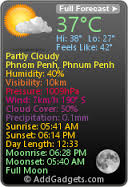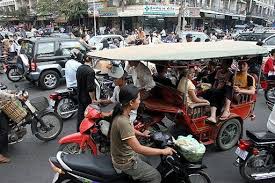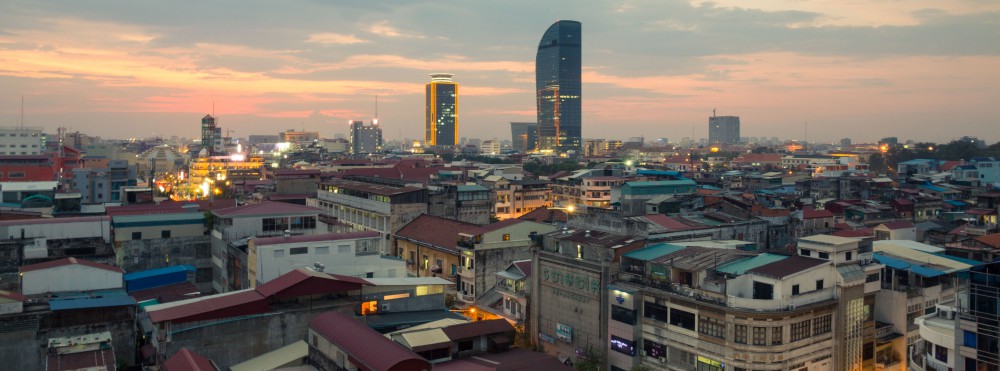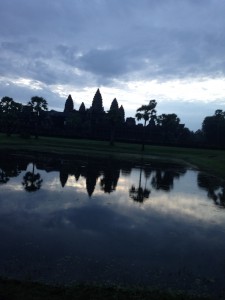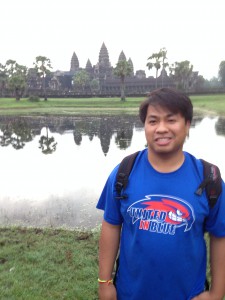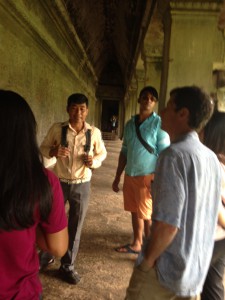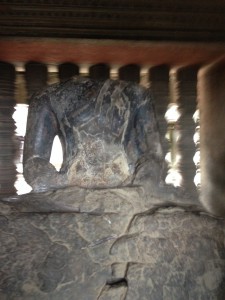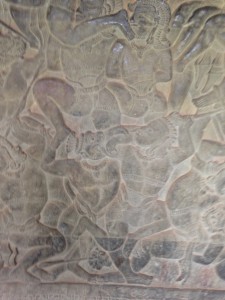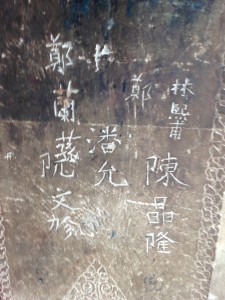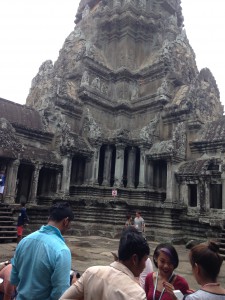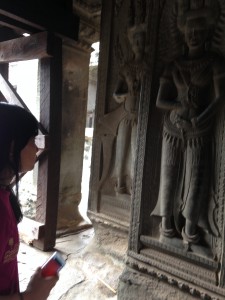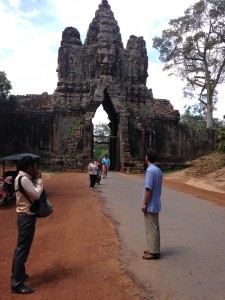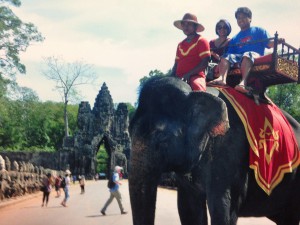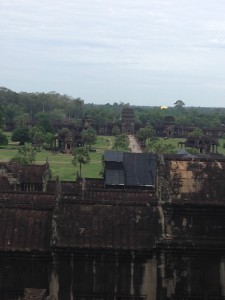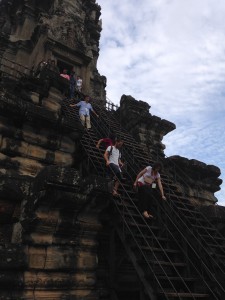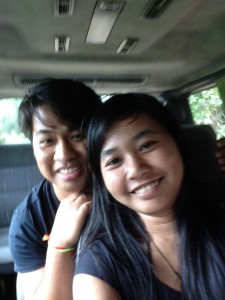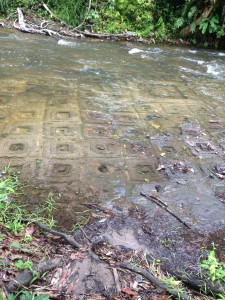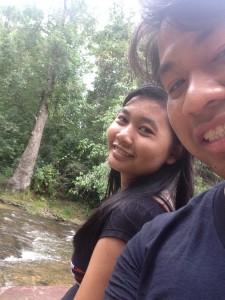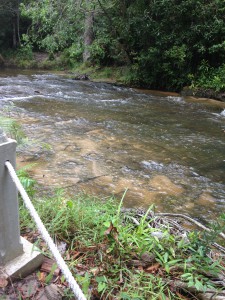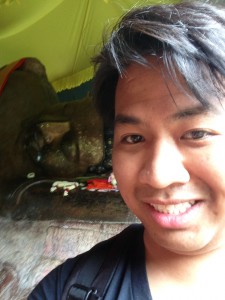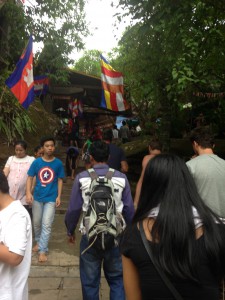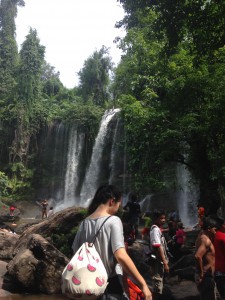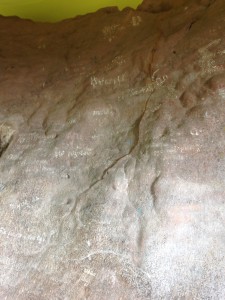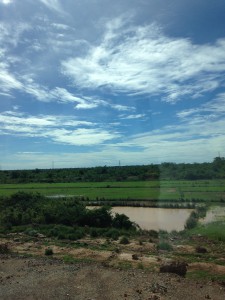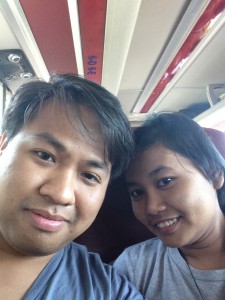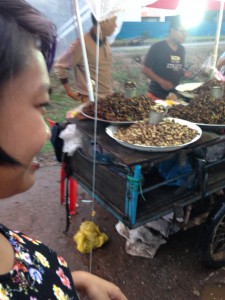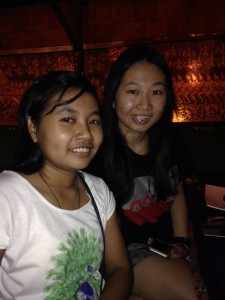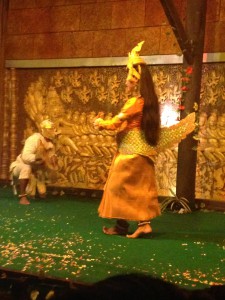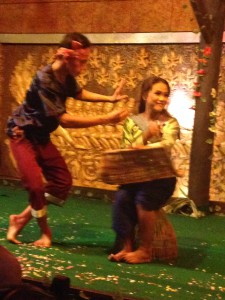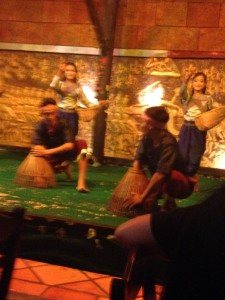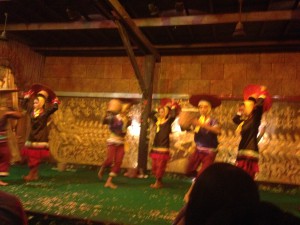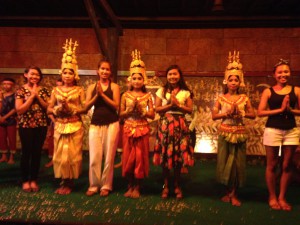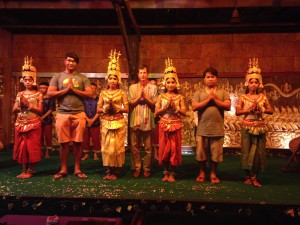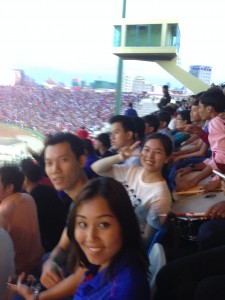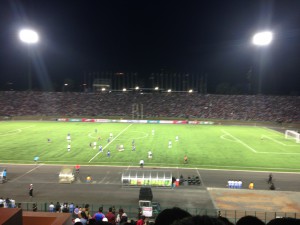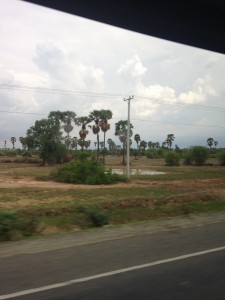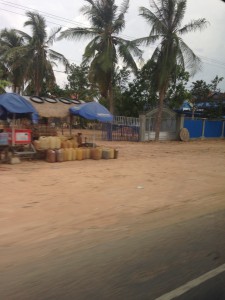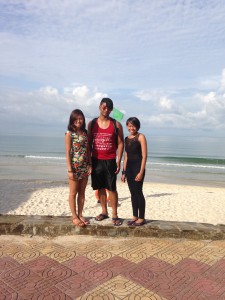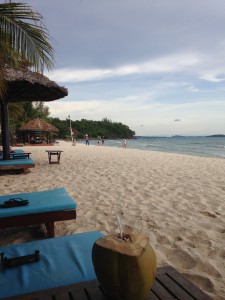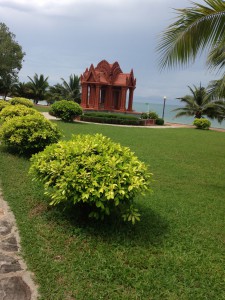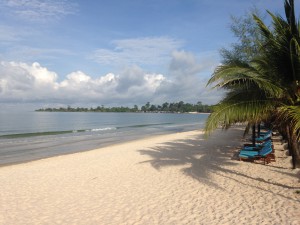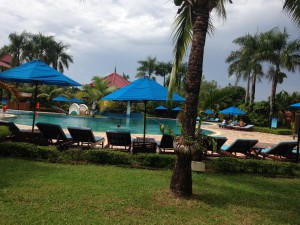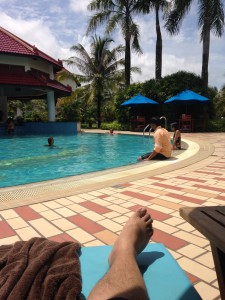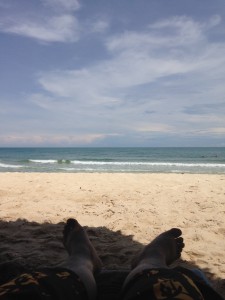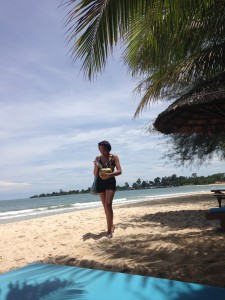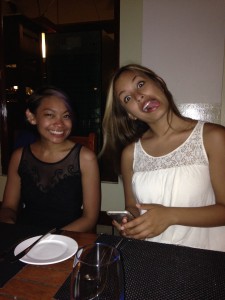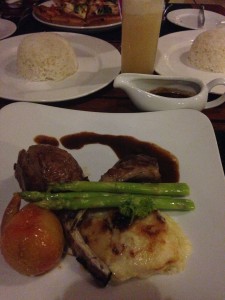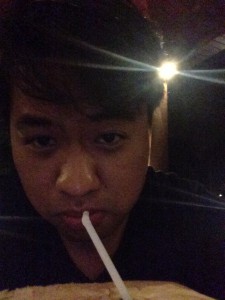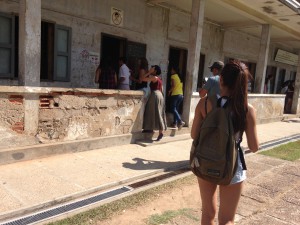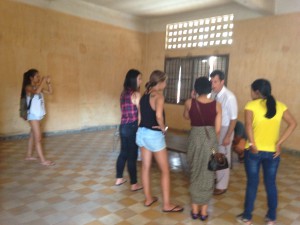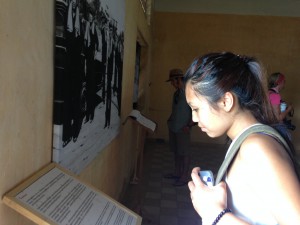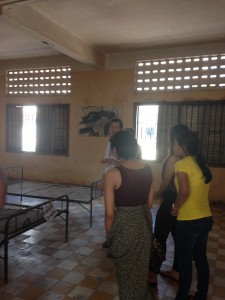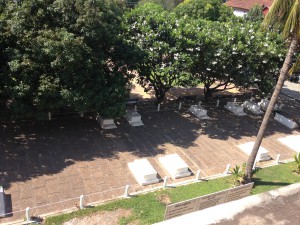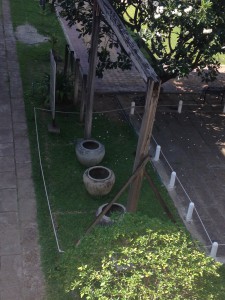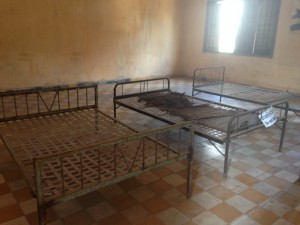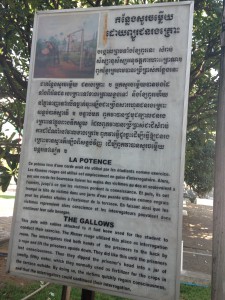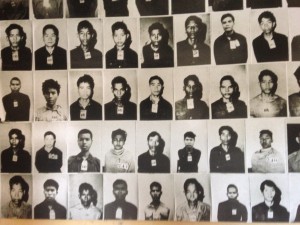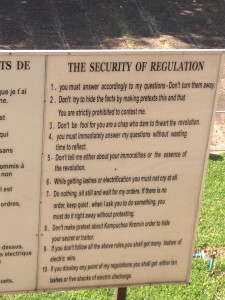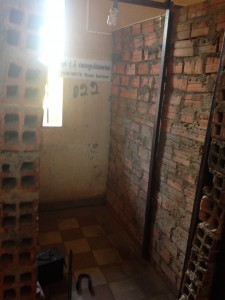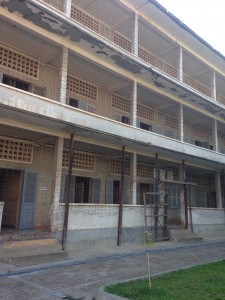During our stay in Siem Reap, we traveled to visit some of the famous temples such as Ta Prohm, Banteay Srey, South gate of Angkor Thom, Terrace of Elephants, Phimean Aksa, Terrace of Leper King, Bayon temple, and one of the world’s wonder, Angkor Wat. we learned about the reason why these temples were built. During the Angkor era, the golden age of Khmer nation, from 802 to 1431, each king who reigned, would construct a temple for his coronation to the throne. Angkor Wat is the largest religious monument in the world, it was dedicated to the Hindu god, Vishnu, and it was the capital city of the Khmer Empire. The construction started by Suryavarman II and finished by Jayavarman VII, the most famous king during the Angkor era. It is a testimony of the Khmer civilization and architecture to have the wealth and the unique technology to construct such an enormous structure. Each stone weighs 1.5 tons, and was placed on top of each other. There were 9 towers in total, however, four of them had collapsed from years of abandoned after the successor kings to Jayavarman VII moved the capital to Phnom Penh area due to Siamese invasions, failure of irrigation system, and widespread of diseases. One unique technique that was being used in constructing the foundation is the sand beneath it to make it all stable, they dig up a moat around the structure as big as a river. The most fascinating thing about the temple is the carving on the stones. On each side of the wall lies a story that carve into the stones and the stories are a major part of informing historians and the people of Cambodia of the rich cultural heritage of the Khmer people. The Angkor Wat was converted to a Buddhist temple in the late 12th century after the reigning king became a Buddhist. Statues of Buddha were placed inside the structure, but most of them were destroyed when the next king decided to change the state religion back to Hinduism. Its rediscover during the French colonization gave rise to the Khmernization and the beginning of Cambodia as a country that quickly wanted to become independence from France and self-governing their own future. Angkor Wat is the most prestigious structure that give every Cambodian a great sense of national pride and prove to the world that they are the descendants of such great builders, craftsmen, and architects, descendants of those whose created one of the greatest civilizations that the world have ever known and constructed one of the most uniquest structures that the world have ever seen. One of the disappointment moments I had is the vandalism inside the structure, as some people had carved their names onto some of the pillars. Please do not touch or make any actions that would destroy or damage the temple or any other ancient monuments around the world. Let help to preserve them for the next generations to see what the ancient civilizations were capable to do with just stones, ropes, and sticks.
Author Archives: dara_duong@student.uml.edu
In the Heart of Tonle Sap and The Floating Villages
On our last day, we drove out to take a boat ride at Tonle Sap (Freshwater Lake), to visit some of the floating villages that are built completely on the water. Before we got to the lake, we made a quick stop at the Hammock restaurant/bar to get some more delicious Khmer dishes for lunch. the reason why it called that because there are hammocks hanging all over it for guests to sit in and rest after the meal. We rested for about an hour, then we headed out to the lake. Tonle Sap is the largest freshwater lake in Southeast Asia, and it expands to three times its size during the summer. The lake is a great resource of food and income for people living on it and around the area. When the water rises up, the plants around the area become food for the fishes and when it goes back down, those fishes will become trapped which are easy picks for the fishermen. It is also a popular attraction site for tourism with hundreds of tourists wanting to see the villages floating on water, and how the villagers live in these villages. We took a medium size boat out, as we were about half-way to the lake, a few smaller boats appeared. They offered to take us to the middle of the lake where the villages are at a price of 2 dollars per person since the water was too shallow and the boat we were on may get struck. Seeing a boat got struck, not even 5 minutes earlier, we agreed and we thought it would be a fun experience. As we arrived to villages, we actually saw restaurants, schools, even a church, all floating above the water, and we saw where they raised crocodiles and catfishes, so we found out where our crocodile meats come from. We went to the top of the floating restaurant, this was when we began to realize that big boats were coming into the villages, even boats that were bigger than ours. We knew we were tricked but we also realized that this was probably one of their ways to make some money to afford themselves till the raining season finally kick in in the country. We had a fun ride on the smaller boats too, with the wind blowing and the water flashing on our face. 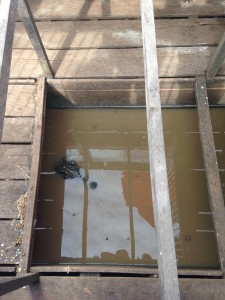
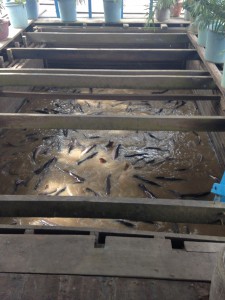
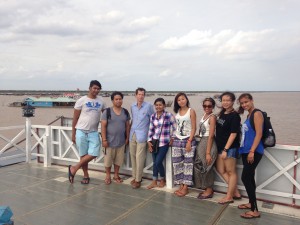
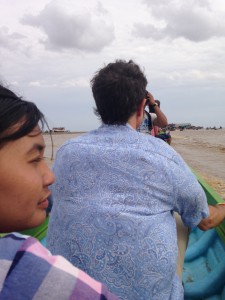
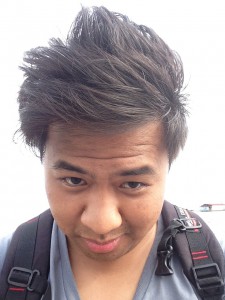
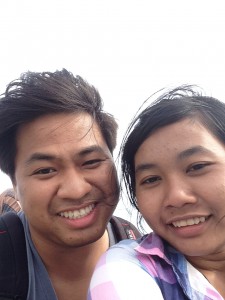
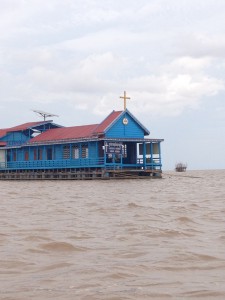

Our Adventure To Siem Reap Part III : Big Buddha Wat, Kulen Mountain, and The Lingams In The Water
On our fourth day in Siem Reap, we visited the Big Buddha Wat or pagoda, to ask for blessing and wishing for good health and of course, to see the giant Buddha statue on top of the mountain. I could not believe how big it was, it has to be at least 15 ft long. I was sadden to see the back of the statue with names written all over it, these names were written before the statue was preserved. After we lit incenses and prayed for our family and friends, we continued our schedule for the day and head to Kulen Mountain. we drove through a narrow dirt road up to the mountain, on the way we passed through two giant boulders on both side of the road. It was so small that only one car could squeeze through them at a time. As we arrived on top of the mountain, we went close to stream of water flowing down, underneath the water you can see the lingam carvings onto the stones as a symbol of Shiva, one of the main Hindu Gods. The lingam was ordered to carve into the stones by Jayavarman II, liberator of Khmer nation from the Kingdom of Java and the founder of the Khmer Empire in 803 AD. Jayvarman II was kidnapped as a child to the Kingdom of Java when Javanese invaders attacked the Kingdom of Chenla. He was raised in Java and eventually escaped and returned back to his homeland. He started to united the clans under his rule and built an army that equipped with advanced weaponry and built a stronger navy than the Javanese navy. His strength in naval command gave him the victory over his enemies, and to pay respect to it, he ordered the carving to be done. The water that flows through the stream covering the lingams is considered to be holy water. Every Angkorian King used the water during his coronation as he took the crown. Jayvarman II was the founder of the Khmer empire that ruled over the mainland Southeast Asia for over 600 years. After learning the history of the beginning of Khmer empire, we made our way down to the waterfall. The view was breath-taking and scenic, from the top of the fall to the bottom is 15 meters high. We took a swim in the water underneath the waterfall. The steam, blowing off from the waterfall, keeps us cool, even it was 90 degrees at 2 PM, we could not feel any heat from the sun beaming down on us. There are also fishes in the water that eat away the dead skin on our feet, just relax, sit back and enjoy the steam and the view.
Education In Cambodia: My Visit To Extra Classes
We finally had some free time on Saturday afternoon away from our fun-packed busy schedule that Sievlan and her sister, Alann had arranged for us. I decided to go visit two small schools with Sievlan to help her posting posters to spread the news on scholarship opportunities that are being offered by AUPP to high school students around the country. These two small schools are not regular schools that students are required to attend, in fact, they are not school at all but rather places for teachers to hold extra classes for their students. The students need to pay to attend these classes. On average, students need to pay 5 dollars to attend a class for a month but the price is varied depend on the teachers. Each student often take 5 classes that teach math, sciences, and others, and they have to go in order to do good in class. Teachers often withhold information on certain topics, for example, in math, the teacher do not do the exercise or not fully finished at explaining how to do it and would tell the students to come to the extra classes to get the full lesson. Students often have to go because the exercise can be on the test and they will not be able to solve it since they have not learned it yet. The main reason the teachers are doing this, it is because of low wages as teachers do not get paid enough to support themselves and their families. This is another source of income for them to get by on the daily expenses. Unfortunately if a student is unable to afford such extra classes, he or she may never do good in school or even pass the national exam at the end of their 12th grade. This practice contributes to the high rate of drop out of Cambodian students, especially in the rural areas, where most of their parents can barely support their families. Hopefully the new direction that the government is taking in reforming the education system in the country will eventually stop this practice from continuing since I believe that neither the teachers, nor the students are willing participants. This is a necessity due to financial needs of the teachers rather than a greedy interest for money from the students.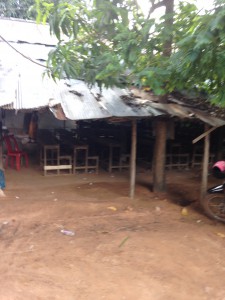
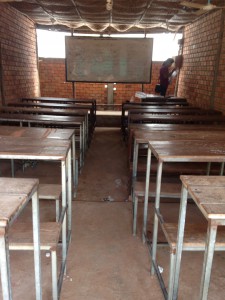

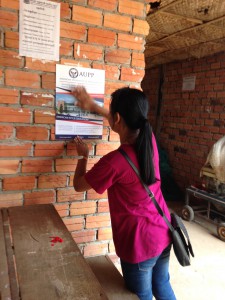
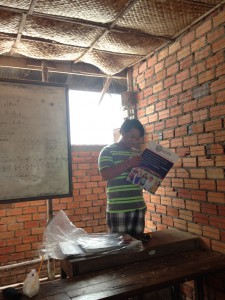
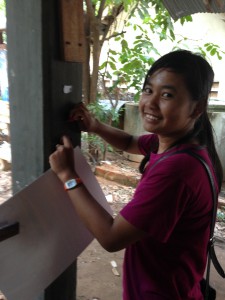
Our Adventure To Siem Reap: Fried Crickets/Worms, Traditional Khmer Dances and Dinner
On Thursday Morning, June 18th, we arrived to the bus station at 6:45 AM to begin our journey to Siem Reap. It is a 6 hours drive from Phnom Penh to Siem Reap, where most of the ancient temples are located. Two of AUPP students, Sievlan and Nicole, had also joined us on this trip, we arrived around 2:30 at the bus station in Siem Reap. We were greeted by our tour guide, Sopky, who was Sievlan’s brother, waiting for us with the van to take us to our hotel. On our first afternoon/night at Siem Reap, we went to 66 Route Market/Picnic place to try some exotic snacks such as fried crickets/cocoons, boiled snails, fried beetles, snakes and others insects. They also sell a variety of sweet and delicious desserts, and there are also entertainments such as darts throwing at balloons, Merry go-round and many more. Around 7 PM, we went to a restaurant called “Khmer BBQ”, where we were treated to traditional Khmer dinner and dances. There were 6 different dances such as the Blessing dance, the Coconut dance, the Fishermen dance, the Cadamon dance, the Hanuman dance and the Apsara dance. Each dance tells a different story, and my favorite dance was the Fishermen dance. The dancers were performing vividly and in rhyme, and there was also a courting scene between a fisherman and a woman who he liked. It was the perfect touch to end our first night in Siem Reap.
National Pride among Cambodian Youth: Cambodia Vs. Afghanistan for FIFA 2018 Qualification
Las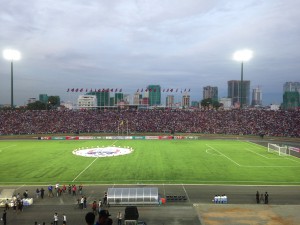 t Tuesday night on June 16th, we went to a “football” game between Cambodia vs Afghanistan, it was one of the four game qualifying games for FIFA World Cup 2018. The game was hosted at the Olympic Stadium, where most international and national sports events are usually held. Despite its name, the stadium never held an Olympic game due to its capacity. It can seat 50,000 people, but that did not stop hundreds of Cambodian youth from flocking into the stadium to watch the football game. The stadium was packed, every seat were filled and many people were standing up to watch the game. All around the stadium, the flags of Cambodia
t Tuesday night on June 16th, we went to a “football” game between Cambodia vs Afghanistan, it was one of the four game qualifying games for FIFA World Cup 2018. The game was hosted at the Olympic Stadium, where most international and national sports events are usually held. Despite its name, the stadium never held an Olympic game due to its capacity. It can seat 50,000 people, but that did not stop hundreds of Cambodian youth from flocking into the stadium to watch the football game. The stadium was packed, every seat were filled and many people were standing up to watch the game. All around the stadium, the flags of Cambodia 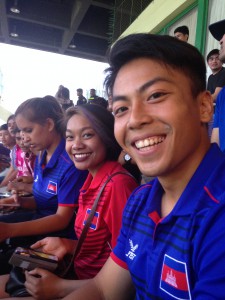 from all sizes could be seen waving in the air, people dressed in blue and red representing the colors of the flag, most people were wearing the official football shirts that the players wear. It was an electrifying experience for me, I never did wave more than 10 times during a sport event or clap in rhyme with a drum for the whole game or jumped up and cheered every time the ball was on the Afghan side of the field or when the Afghan players missed the goal. Cambodian people, especially the youth, strongly support their national football team, the stadium are always packed for every football game, even though they know that the team is not at the high level of performances like other countries’ team around the world yet. They have high hope for the team and o
from all sizes could be seen waving in the air, people dressed in blue and red representing the colors of the flag, most people were wearing the official football shirts that the players wear. It was an electrifying experience for me, I never did wave more than 10 times during a sport event or clap in rhyme with a drum for the whole game or jumped up and cheered every time the ball was on the Afghan side of the field or when the Afghan players missed the goal. Cambodian people, especially the youth, strongly support their national football team, the stadium are always packed for every football game, even though they know that the team is not at the high level of performances like other countries’ team around the world yet. They have high hope for the team and o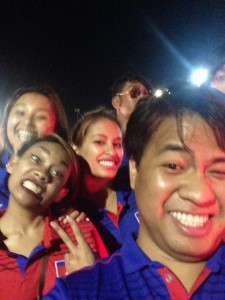 ther national teams as the new Action plans are being implementing by the Ministry of Education, Youth and Sport to get the teams ready for the SEA Game. The result was 0-1 with Afghanistan’s victory.
ther national teams as the new Action plans are being implementing by the Ministry of Education, Youth and Sport to get the teams ready for the SEA Game. The result was 0-1 with Afghanistan’s victory.
Sihanoukville: Sokha Beach Resort
On Friday, June 12th, We arrived to Sokha Beach Resort at Sihanoukville, Kompongsom Province in the late afternoon. It was about a 4 hours drive from Phnom Penh to Sihanoukville. The resort is the biggest resort in the area. It has a spa, with back and foot massages, and a pool with a built-in bar right in the middle of it. The beach is about a 5 minutes walk from the resort, and the best part is the resort has TENNIS courts. Unfortunately, I was not able to play on it since I was too busy relaxing on a beach chair drinking a coconut and enjoying the cool breeze flowing from the ocean. The beach was the best place to fall asleep even with the sun beaming down on us at 35 Celsius (95 degrees Fahrenheit), we could not feel the heat. The water was nice and cool, not too cold or too warm. I would recommend this resort to others to check it out, the only downside is it is really pricey to stay there. If you really want to visit the beach in Sihanoukville, there are other more affordable hotels and resorts nearby the area, so get up and go, you will not regret it.
Tuol Sleng Genocide Museum: S-21
On Wednesday afternoon, June 10th, we visited the notorious Khmer Rouge prison at Tuol Sleng, also known as S-21, located in the Capital of Phnom Penh. Two of our classmates from AUPP, Nicole and Sievlan, came along for their first visit also. Tuol Sleng was a high school that converted into a prison by the Khmer Rouge to torture and interrogate those considered to be enemies of the state. About 12,000 men, women and children were sent to S-21, accused of being Vietnamese spies, who were sent to Cambodia to sabotage the country’s rice farming. The prisoners were tortured till they confessed their crimes and gave the names of 5 other individuals who were supposed to be their associates. This was another motto of the Khmer Rouge, which was “to dig grass, you have to dig the root” meaning to destroy the enemy, you have to destroy all his family and friends, no matter how old or young they are. There were no factual evidence that any of these people were actual spies sent by the North Vietnamese government. In fact, many of the prisoners were Khmer Rouge cartels who were in charge of villages in each region. Since they could not make the 3 tonnes minimum of rice harvest, they were accused of conspiring with the enemies. Only 4 male adults and 4 children survived from this extermination center. All of the others were sent to be executed at Chhoeng Ek, also known as the Killing field, or died from starvation or the pains from being tortured. On January 7th, 1979, the Vietnamese forces finally reached Phnom Penh, and pushed the Khmer Rouge out, ended their almost 4 years rule. The KR guards quickly ran away but not after killing the last 14 remaining prisoners that they tortured. The bodies were found by the Vietnamese forces as they entered the prison, still lying and bleeding on the metal beds that held them down. The bodies are buried in the yard when the prison was made into a museum, for others to give respect. This prison was one of the atrocious acts that the Khmer Rouge had committed to its own people. 1.5 to 2 millions Cambodians died under the Khmer Rouge regime, due to starvation, diseases, long hours of hard labors, and execution. The museum is a reminder to the people of Cambodia of its darkest hours and to the rest of the world that such horrible events did happen and to never forget those who had lost their lives. Above all, it is to display the resilience of the Khmer people of how far they have come for the last 35 years. I have no doubt that the Cambodian people, especially the youth, have the potential to achieve more and move toward an even brighter future.
The Royal Palace and Our New Friend From AUPP
On Monday, June 8th, we visited the Royal Palace with one of our classmates from AUPP, Yutt, who wanted to come along with us. We arrived at the palace around 3:30, which was little bit late since they have started to closing up already. Luckily we were able to see the throne room before they closed the door, and we also got to see the Silver Temple where ancients relics were kept. Pictures were not allowed in the temple but we got to take tons of pictures outside and around the surrounding buildings. 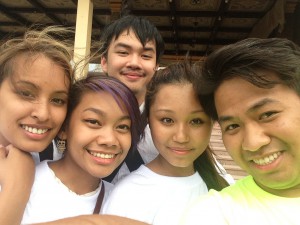
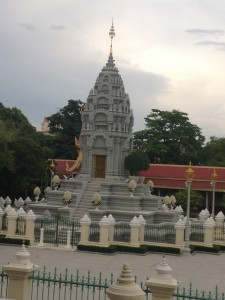
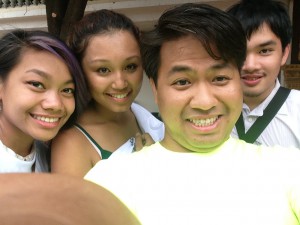
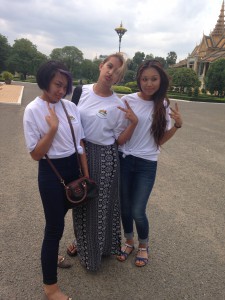
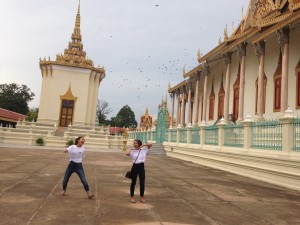
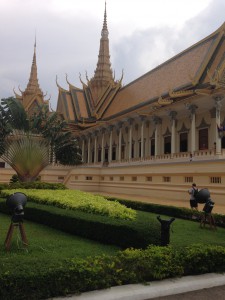
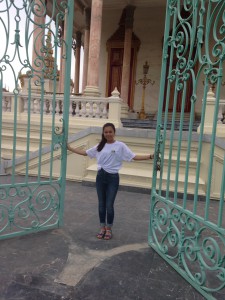
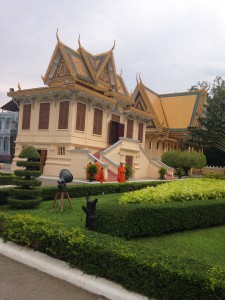
Our Arrival Experiences in Cambodia
We arrived on Thursday, June 4th, around 10:30 am. The first thing that we all felt was the heat, we started sweating as soon as we got off the plane. One of us, Jennifer Sem yelled out “wow! it’s hot here”, I couldn’t wait for us to go into the building where there were A/Cs. On our way to our new apartment, we were really surprised and frightened at the same time about the traffic in Phnom Penh. It does not stop, not even when someone cross the road. Cars and “moto” drivers all just keep going and passing each other on the road, even passing on the opposite side of the road. we were really amazed how people were managed not to get into accidents, with these many vehicles and moto drivers on the road. However, we found out that the leading cause of death in Cambodia is motor accidents. So hopefully we will not witness one of those accidents during our stay (Pictures below). 